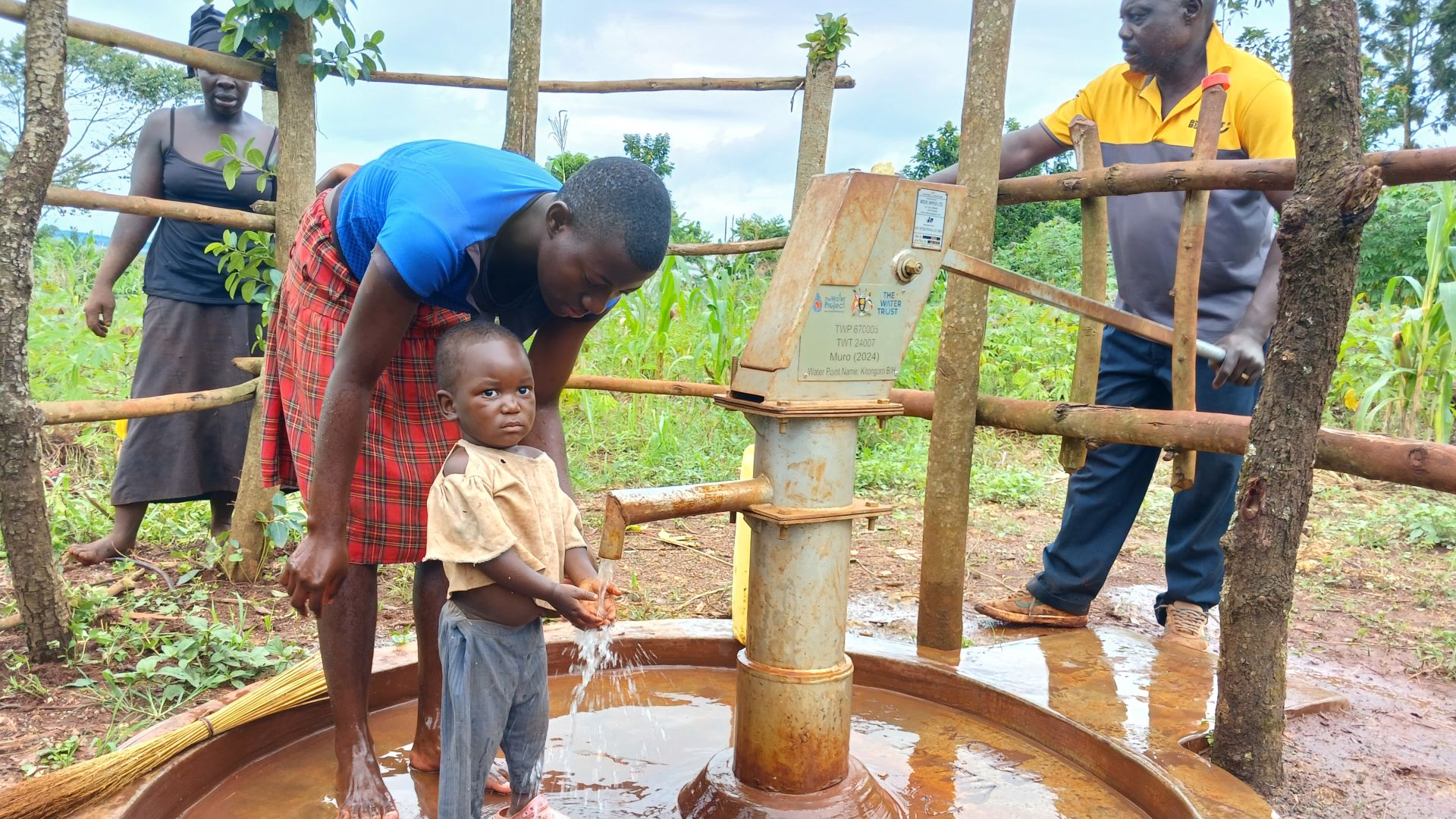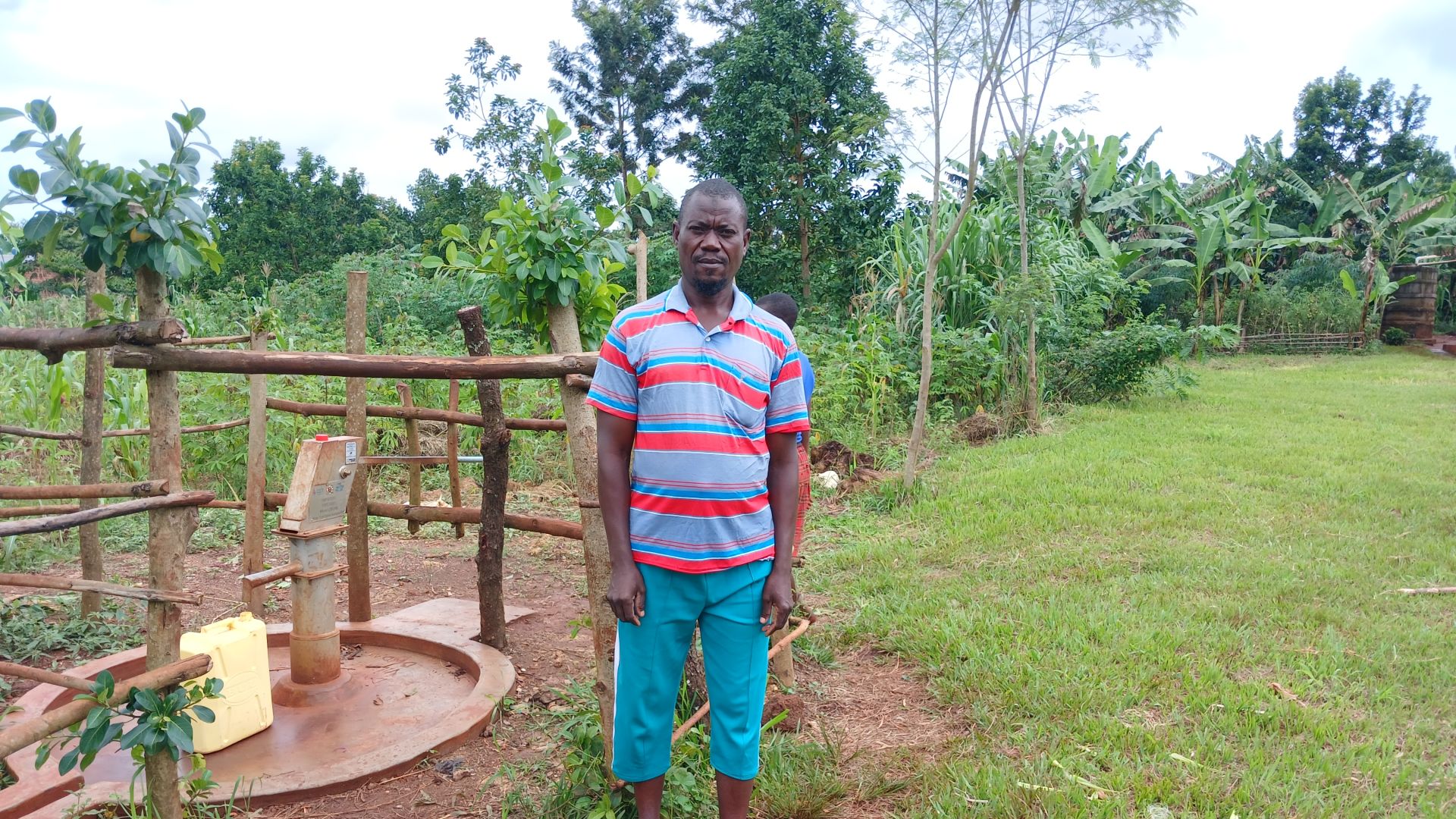In the Muro Kaziramaiga Community, its 300 members labor tirelessly to access ample water. Not only do they risk their health by relying on unprotected sources that are bound to make them ill, but the journey to get to them also threatens their safety.

According to Field Officer Bena Nakabiri, neither the scoop hole nor the often broken-down protected dug well offers safe water to consume. Residents have reported diarrhea and stomachaches. According to the World Health Organization:
"Diarrhoeal disease is the second leading cause of death in children under five years old."
50-year-old Joyce Asiimwe, seen below, shared her experience. "I fetch water from a scoop hole in Kinyara sugarcane plantation; the water point is very far. It is in a hard-to-reach area, and being in the middle of the plantation makes it risky. I can't go there alone as a woman. We always gather in groups if I am to collect water because the surrounding area is not safe. Sugarcane cutters are always around the water point, and I fear them because of their weird behaviors."

Children are not excluded from the hardships this water crisis presents.
"It's also hard to send young children because they have to cross the Masindi- Hoima tarmac road. Kids used to fall in the scoop hole until the community made some efforts and put some pipes as a way of protecting people from danger," Joyce added.
13-year-old Ivan W., seen below, is often tasked with collecting water for his household.

He said, "I face a lot of challenges in trying to access the waterpoint. [It] is far, and the access road is not good because I have to go through sugarcane plantations, and the surrounding environment is bushy. I always have [a] fear of being kidnapped. Whenever I go to fetch water in the evening when I am back from school, I end up getting back home late when it's already dark. [This is] high risk. All these challenges kill my morale of fetching water."
The community members use the scoop hole on the sugarcane plantation and a protected dug well that often breaks down from overuse (shown below). Both water points are often overcrowded, causing people to waste a lot of time waiting in lines.
Anytime spent traveling to a waterpoint or waiting in line is time stolen from other life-essential tasks. It's time taken from caring for families, investing in income-generating activities, and crucial classroom time. Without clean, easily accessible water, the Muro Kaziramaiga Community stays stuck in a cycle of poverty.

Installing the borehole well will enable people like Joyce to safely and efficiently collect water without fear. Hopefully, it will help children like Ivan fulfill their duties of contributing to their households without risking their safety or education.
The Proposed Solution, Determined Together...
At The Water Project, everyone has a part in conversations and solutions. We operate in transparency, believing it benefits everyone. We expect reliability from one another as well as our water solutions. Everyone involved makes this possible through hard work and dedication.
In a joint discovery process, community members determine their most advantageous water solution alongside our technical experts. Read more specifics about this solution on the What We're Building tab of this project page. Then, community members lend their support by collecting needed construction materials (sometimes for months ahead of time!), providing labor alongside our artisans, sheltering and feeding the builders, and supplying additional resources.
Water Access for Everyone
This water project is one piece in a large puzzle. In Kenya, Sierra Leone, and Uganda, we're working toward complete coverage of reliable, maintained water sources that guarantee public access now and in the future within a 30-minute round trip for each community, household, school, and health center. One day, we hope to report that this has been achieved!
Training on Health, Hygiene & More
With the community's input, we've identified topics where training will increase positive health outcomes at personal, household, and community levels. We'll coordinate with them to find the best training date. Some examples of what we train communities on are:
- Improved hygiene, health, and sanitation habits
- Safe water handling, storage & treatment
- Disease prevention and proper handwashing
- Income-generation
- Community leadership, governance, & election of a water committee
- Operation and maintenance of the water point
A Community-Wide Approach
In Uganda, we require that the community pledges to stop any open defecation practices before we install the water project — meaning that every household must construct and use a latrine. This will help prevent the spread of diseases and start them on a new path toward better hygiene and sanitation alongside their new water source.
To help with this, we assign a Community Development Officer (CDO) to each community, who encourages each household to install a handwashing facility, animal-keeping structures, a garbage pit, and a drying rack for dishes. Each of these homestead components prevent commonly spread diseases in their own way.
We implement something called a Community-Led Total Sanitation (CLTS) approach, which involves setting up multiple meetings during which community members assess their own hygiene and sanitation practices in hopes of creating long-term change. During these sessions, leaders naturally emerge and push the community to recognize current unhealthy behaviors that affect the entire community.

 Borehole Well and Hand Pump
Borehole Well and Hand Pump
 Rehabilitation Project
Rehabilitation Project























